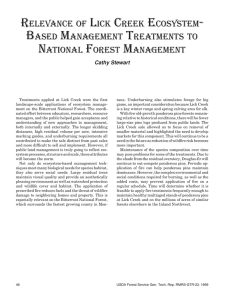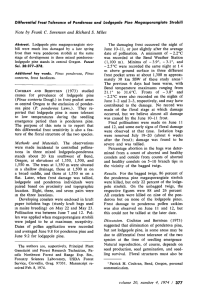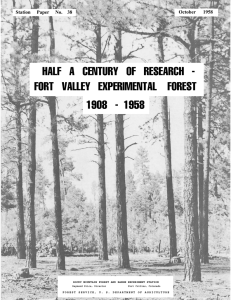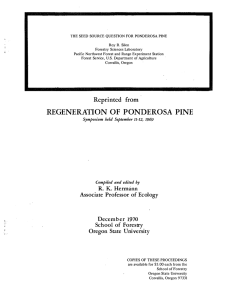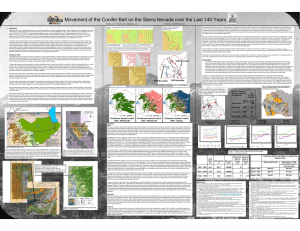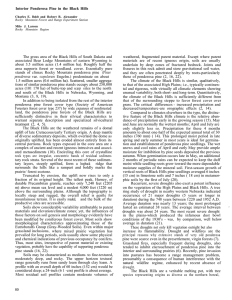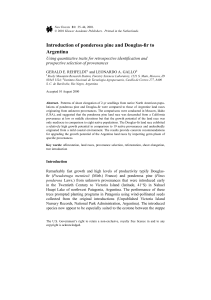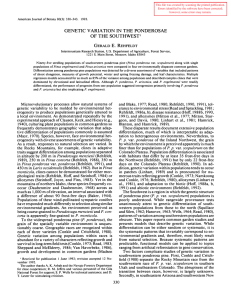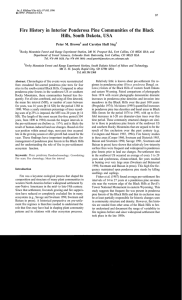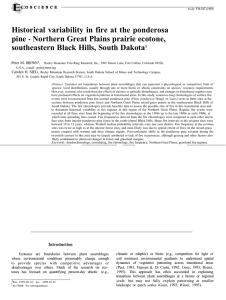Research on Climate Impacts
advertisement
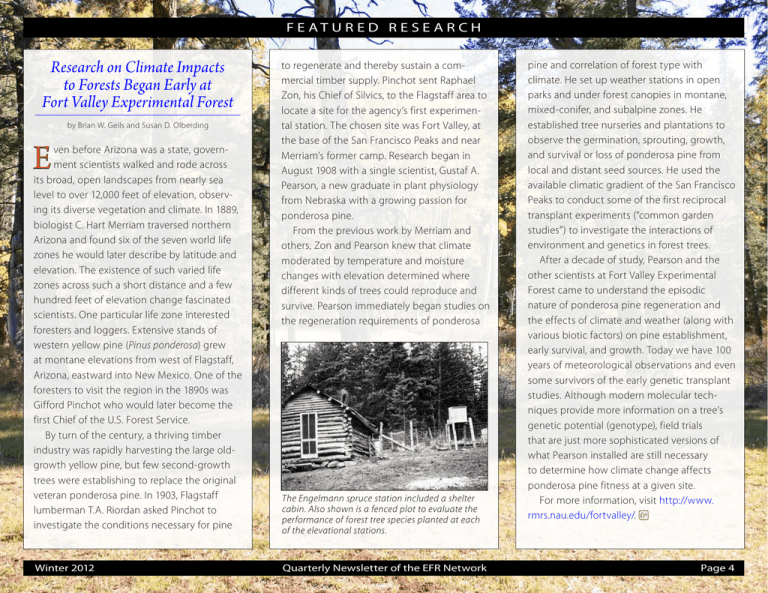
F E AT U R E D R E S E A R C H Research on Climate Impacts to Forests Began Early at Fort Valley Experimental Forest by Brian W. Geils and Susan D. Olberding E ven before Arizona was a state, government scientists walked and rode across its broad, open landscapes from nearly sea level to over 12,000 feet of elevation, observing its diverse vegetation and climate. In 1889, biologist C. Hart Merriam traversed northern Arizona and found six of the seven world life zones he would later describe by latitude and elevation. The existence of such varied life zones across such a short distance and a few hundred feet of elevation change fascinated scientists. One particular life zone interested foresters and loggers. Extensive stands of western yellow pine (Pinus ponderosa) grew at montane elevations from west of Flagstaff, Arizona, eastward into New Mexico. One of the foresters to visit the region in the 1890s was Gifford Pinchot who would later become the first Chief of the U.S. Forest Service. By turn of the century, a thriving timber industry was rapidly harvesting the large oldgrowth yellow pine, but few second-growth trees were establishing to replace the original veteran ponderosa pine. In 1903, Flagstaff lumberman T.A. Riordan asked Pinchot to investigate the conditions necessary for pine Winter 2012 to regenerate and thereby sustain a commercial timber supply. Pinchot sent Raphael Zon, his Chief of Silvics, to the Flagstaff area to locate a site for the agency’s first experimental station. The chosen site was Fort Valley, at the base of the San Francisco Peaks and near Merriam’s former camp. Research began in August 1908 with a single scientist, Gustaf A. Pearson, a new graduate in plant physiology from Nebraska with a growing passion for ponderosa pine. From the previous work by Merriam and others, Zon and Pearson knew that climate moderated by temperature and moisture changes with elevation determined where different kinds of trees could reproduce and survive. Pearson immediately began studies on the regeneration requirements of ponderosa The Engelmann spruce station included a shelter cabin. Also shown is a fenced plot to evaluate the performance of forest tree species planted at each of the elevational stations. Quarterly Newsletter of the EFR Network pine and correlation of forest type with climate. He set up weather stations in open parks and under forest canopies in montane, mixed-conifer, and subalpine zones. He established tree nurseries and plantations to observe the germination, sprouting, growth, and survival or loss of ponderosa pine from local and distant seed sources. He used the available climatic gradient of the San Francisco Peaks to conduct some of the first reciprocal transplant experiments (“common garden studies”) to investigate the interactions of environment and genetics in forest trees. After a decade of study, Pearson and the other scientists at Fort Valley Experimental Forest came to understand the episodic nature of ponderosa pine regeneration and the effects of climate and weather (along with various biotic factors) on pine establishment, early survival, and growth. Today we have 100 years of meteorological observations and even some survivors of the early genetic transplant studies. Although modern molecular techniques provide more information on a tree’s genetic potential (genotype), field trials that are just more sophisticated versions of what Pearson installed are still necessary to determine how climate change affects ponderosa pine fitness at a given site. For more information, visit http://www. rmrs.nau.edu/fortvalley/. 3 Page 4

